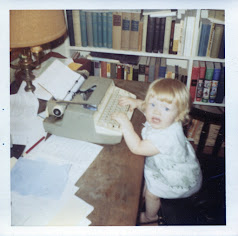This 7th installment of Howard Matthews' story contains mostly dry factual information about family members but also talks about an old Pennsylvania railroad.
And then there was an annual summer visit to the home of Uncle Joe (my mother's brother) in Scranton. They had five children: Joe, Jr., Fred, Milton, Emily and Ada. Emily, named after my mother's sister, married Harrison Creswell, an Englishman, who ran the Scranton Lace Works and was a star soccer player. Ada, named after my mother, never married, became an Osteopathic physician with an office in Scranton. Joe, Jr. became a pharmacist. Fred, a year older than I, was initially a banker, then became one of the top executives of the original Coca Cola Co., and lived in Virginia. Milton, a year younger than I, became an electrical engineer and died rather young of cancer. We have lost track of all except Joseph Creswell, son of Harrison and Emily (now deceased) but still hear from Mrs. Joe Creswell each Christmas season.
Just recently I received a letter from Robert Cresswell, the second son of Emily and Harrison Cresswell, in which he gave the following information about Uncle Joe's family:
Rita, - died in infancy (I had not known of this child)
Ada- born 1888, retired Osteopathic Dr never married, died 11-12-80
Emily born 1886 Cresswell died August 1954
Joseph born 1894 Chemical Co Executive died 10-19-76
Fred born 1900 Coca Cola Executive died May 1967
Milton born 1902 Electrical Contractor died 12-14-60
Robert Cresswel, from whom I received the above, lives in Atlanta, Georgia. Vicky Cresswell, widow of Robert's brother Joe, lives in California. They visited us when we lived in Chicago, and we hear from her every Christmas season. The only other survivor of this group is Milton's wife, Averil, who lives in Arizona.
I must have been quite young, perhaps six or seven, when I was first permitted to make the journey to Scranton all alone. This involved taking the "Cannonball"*, a fast two-car electric train, which ran from Wilkes-Barre to Scranton via Pittston, and selecting a date on which Uncle Joe could meet me at the Scranton station, and take me, via street car, to his home in the Green Ridge residential section of Scranton. As the street car passed the Scranton jailhouse, Uncle Joe never failed to remind me that I'd better be good or I would end up there!
*The Laurel Line, which was the principal mode of transportation to Rocky Glen, was an electric powered railroad with frequent daily runs between Scranton and Wilkes-Barre by way of Pittston with stops along the right of way, at little shed-like structures for the passengers as they awaited the train.
The Laurel Line began operation on May 20, 1903, earning the nickname "The Cannonball" because of its fast service between Wilkes-Barre and Scranton, a trip which required 43 minutes. This included stops along the way including two stations en route, in Plains and Pittston. The trains received power from an electrically charged third rail adjacent to the tracks. This power source was eliminated when the train entered Wilkes-Barre and Scranton when the power was obtained by overhead trolley wires.
In its heyday, the Laurel Line carried millions of passengers with a peak year in 1921 with 4,229,516 passengers. The largest single day was on Memorial Day in 1924 when 72,242 people were carried to the John Mitchell statue unveiling in Scranton. In contrast, on Memorial Day, 1952, only 3,000 passengers used the line.
The last run of the popular carrier was on New Year's Eve, 1952, as the train made a symbolic journey from Wilkes-Barre to Scranton, tooting its familiar horn while it rolled through the many towns along the right of way.
My family and I were among those who saw its last run that New Year's Eve. We stepped out to my back yard and looking down the ravine behind our home, we watched the venerable old train as it slowly rolled by for the last time, passing into obscurity. ("
Remembering the great days of Rocky Glen" www.citizensvoice.com "Rembering the great days of Rocky Glen" Richard Cosgrove, As I Was Saying, Published: June 22, 2010.)











